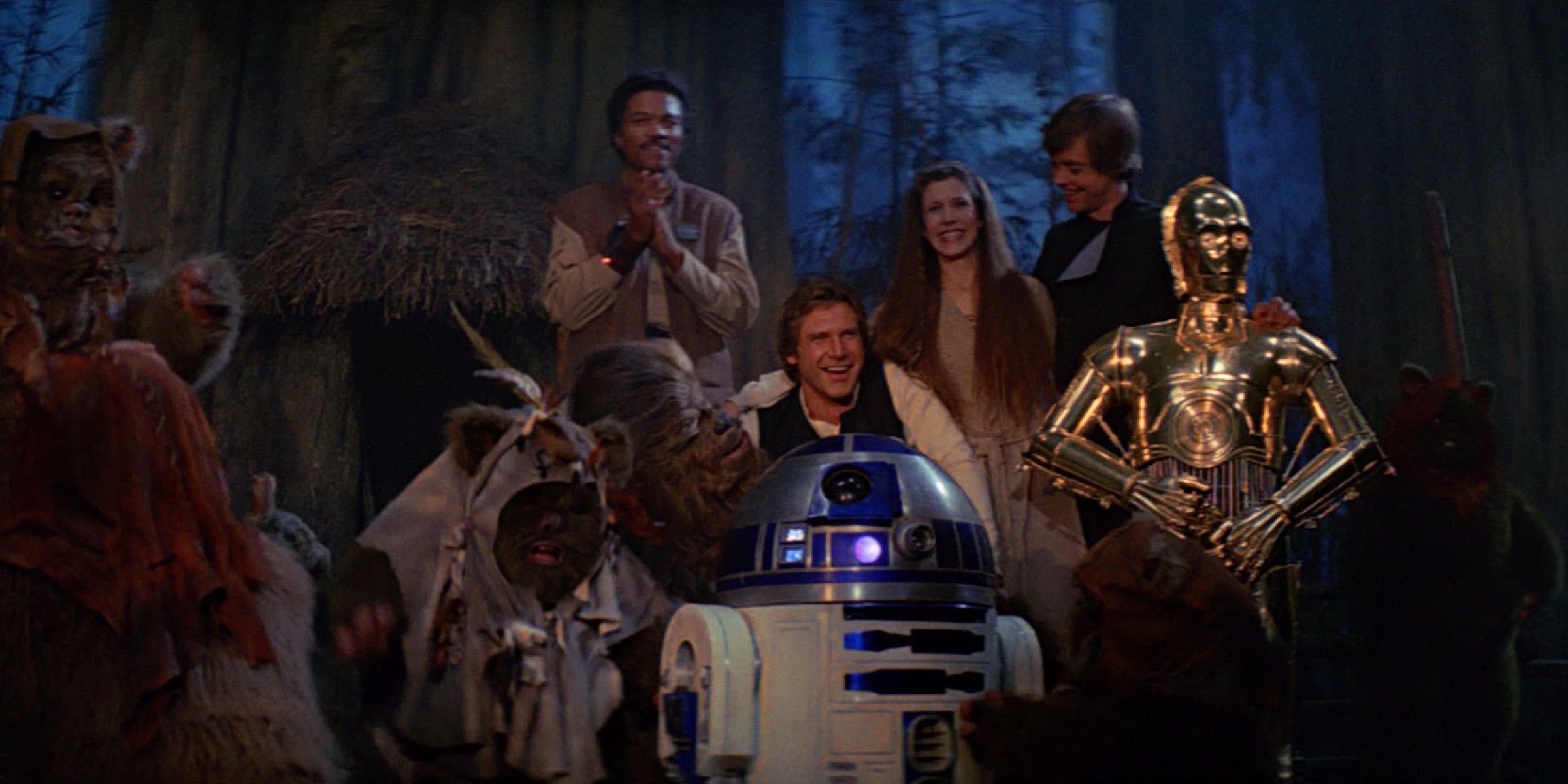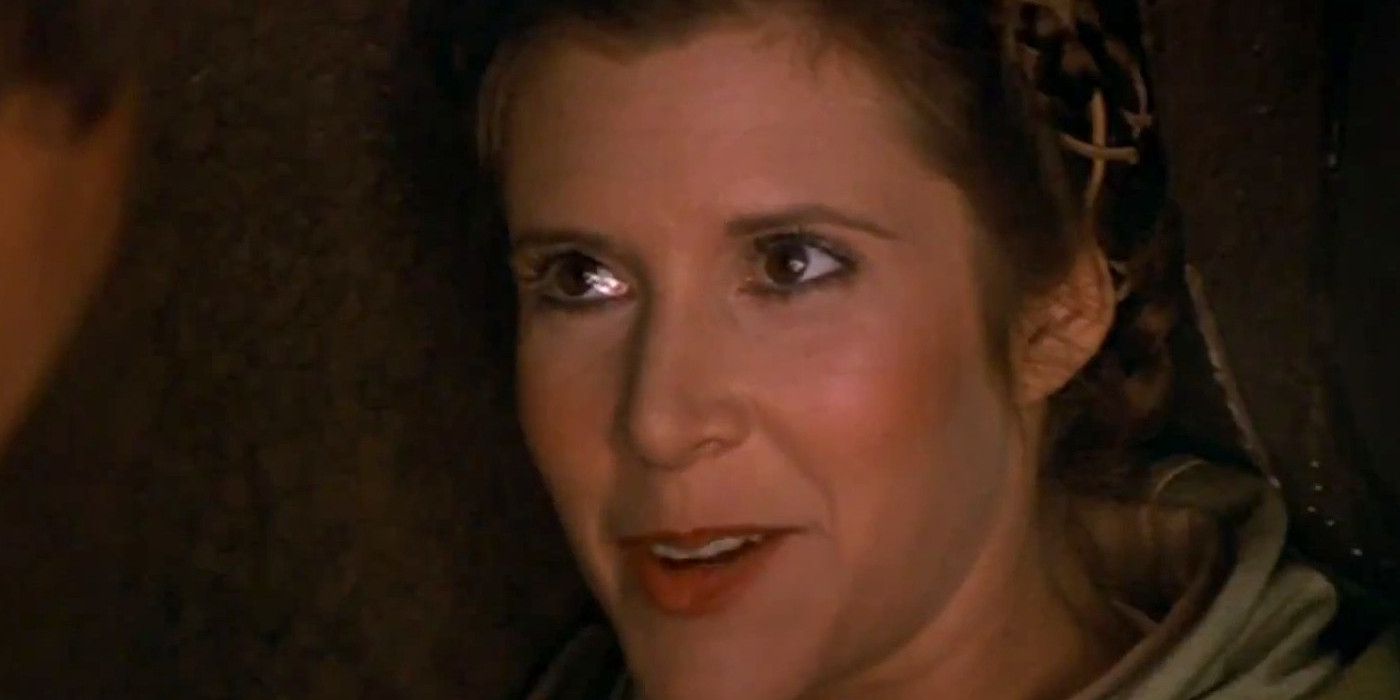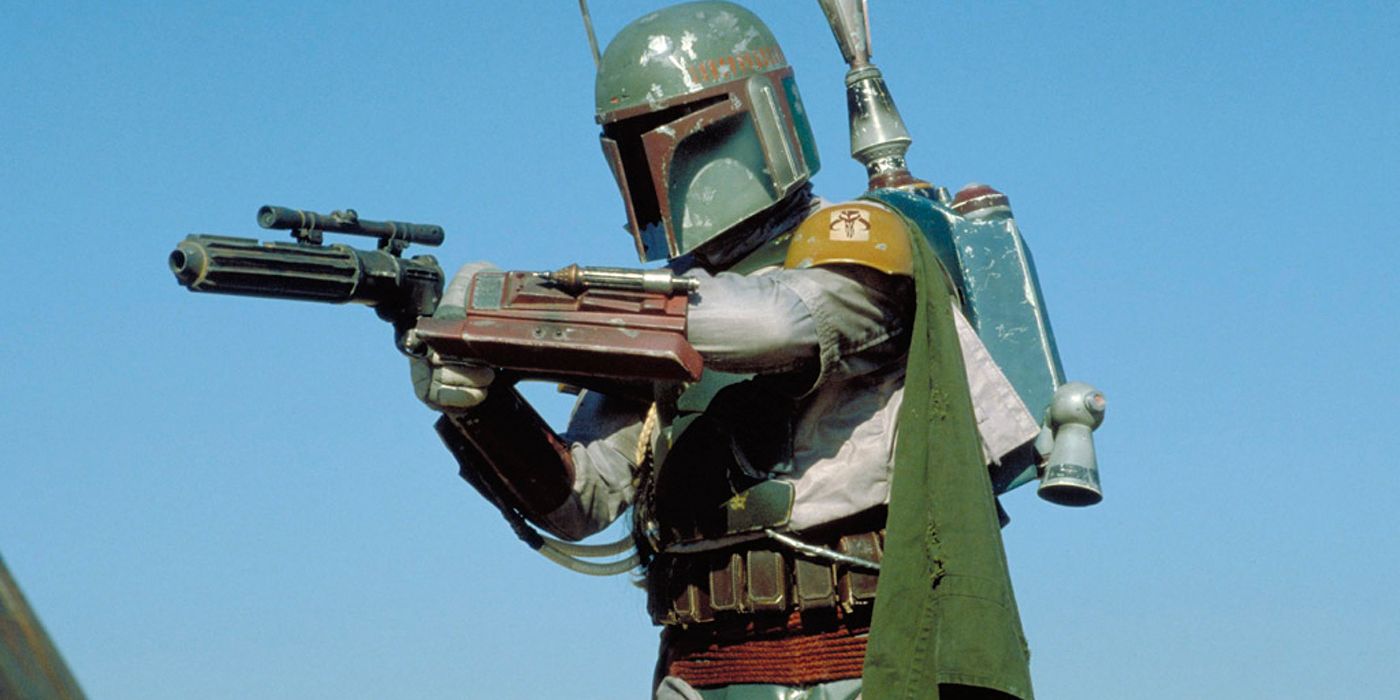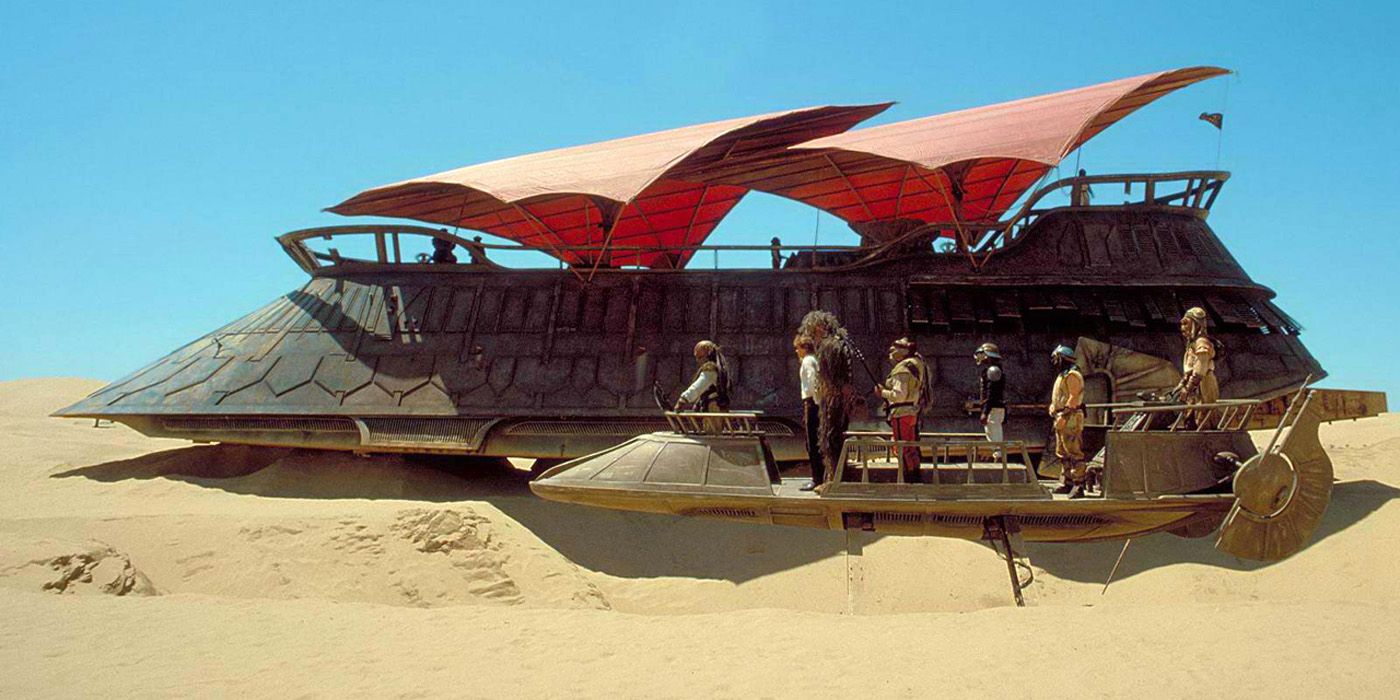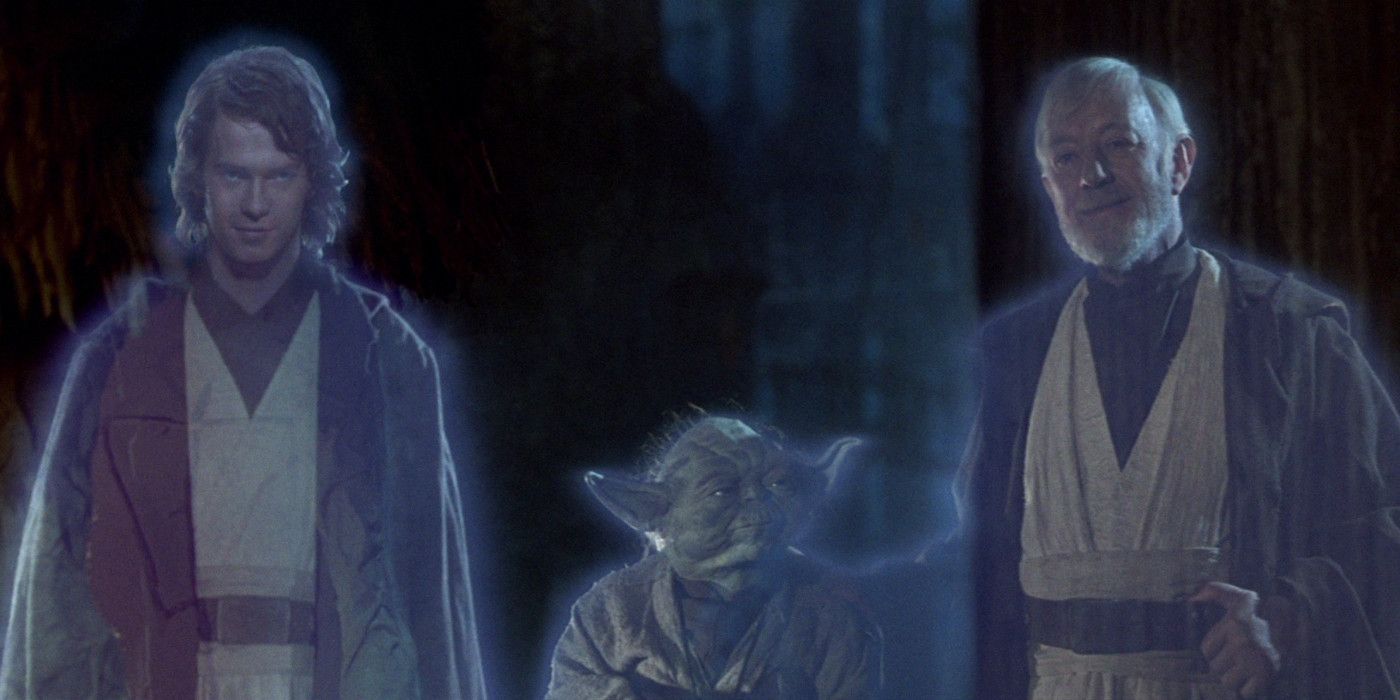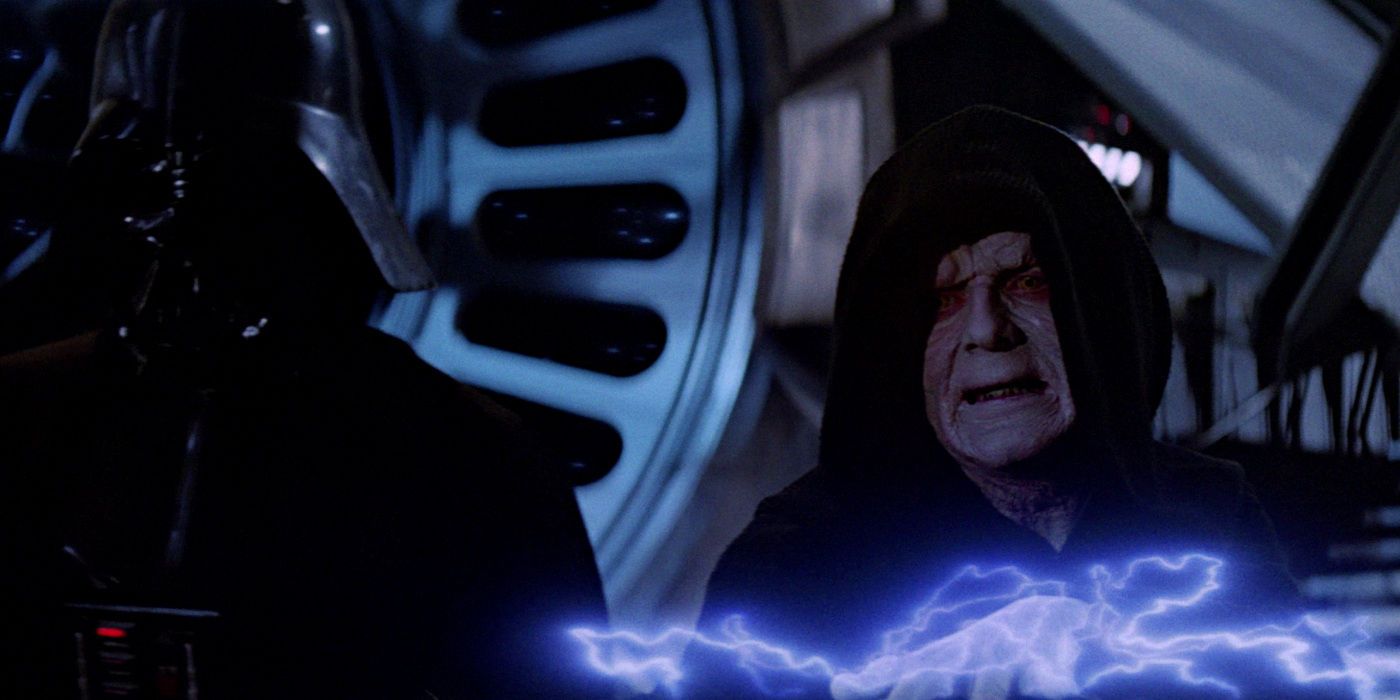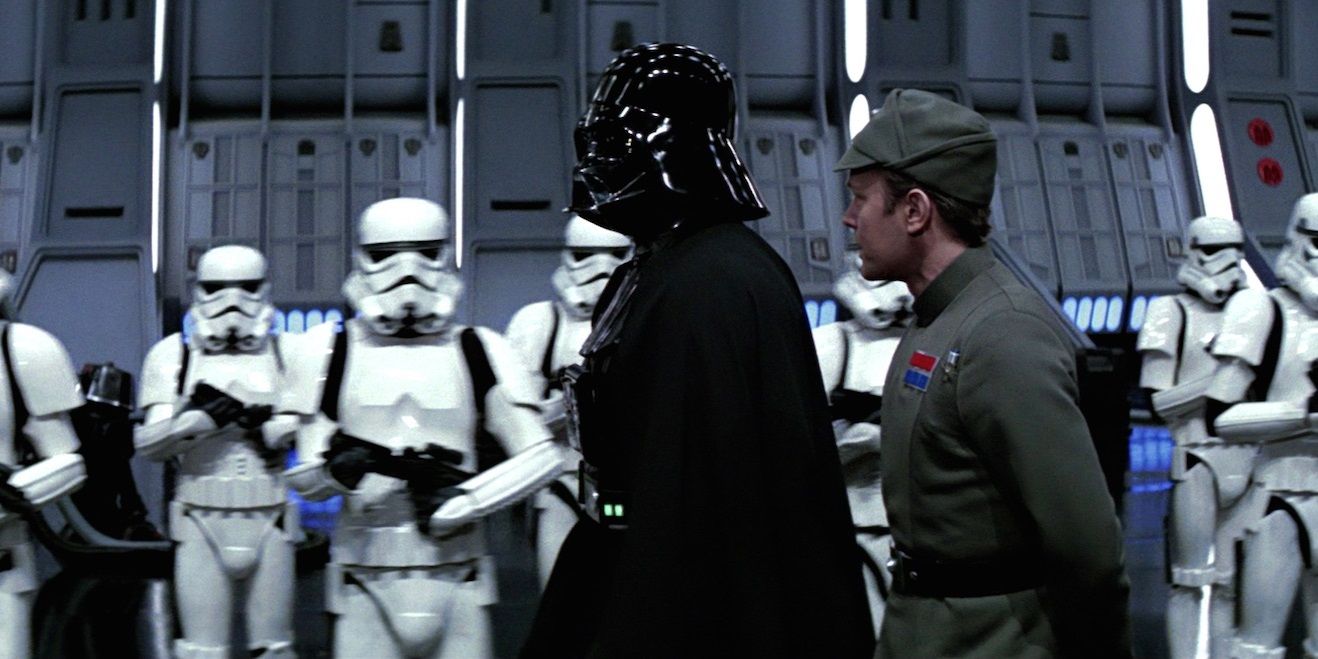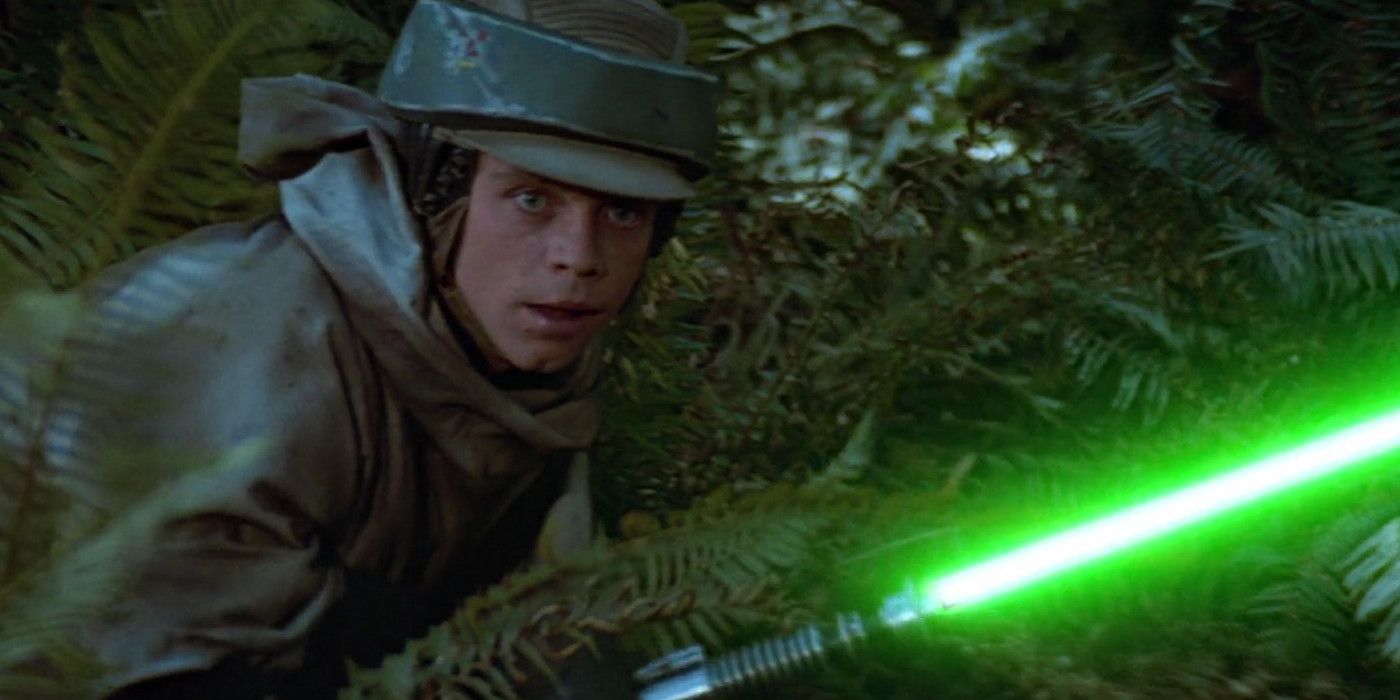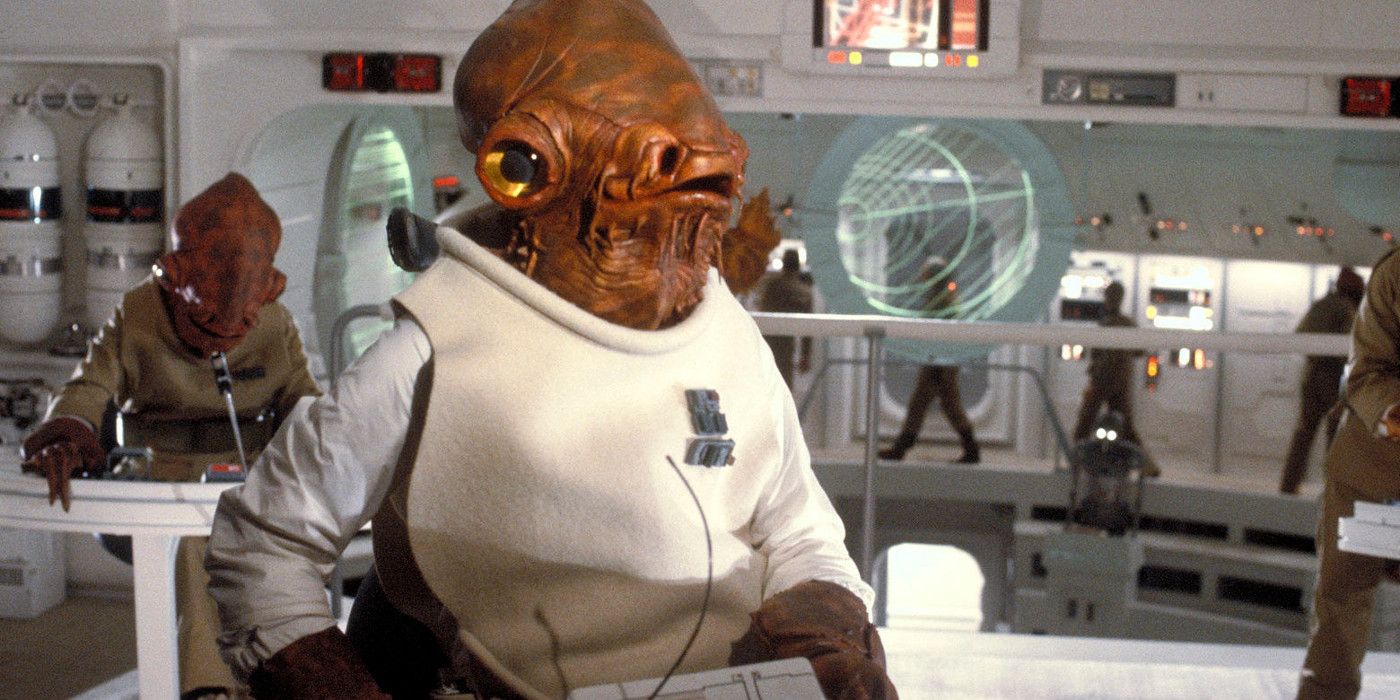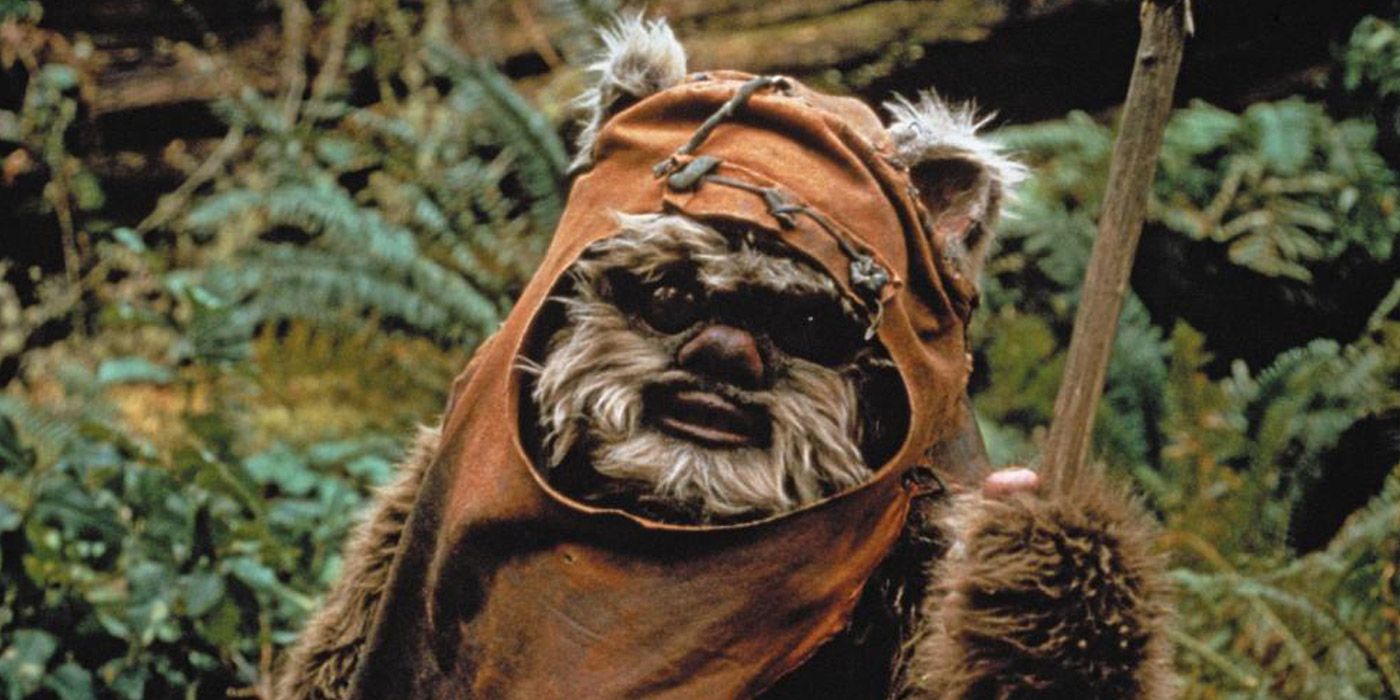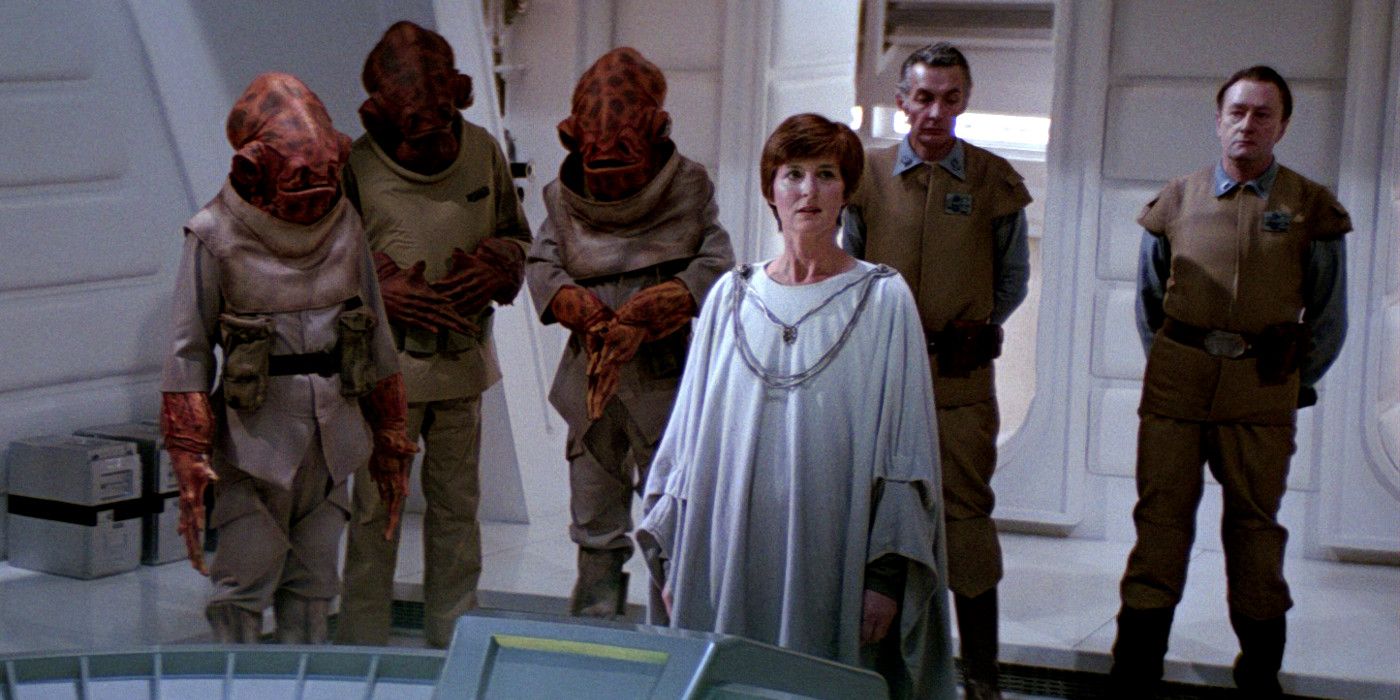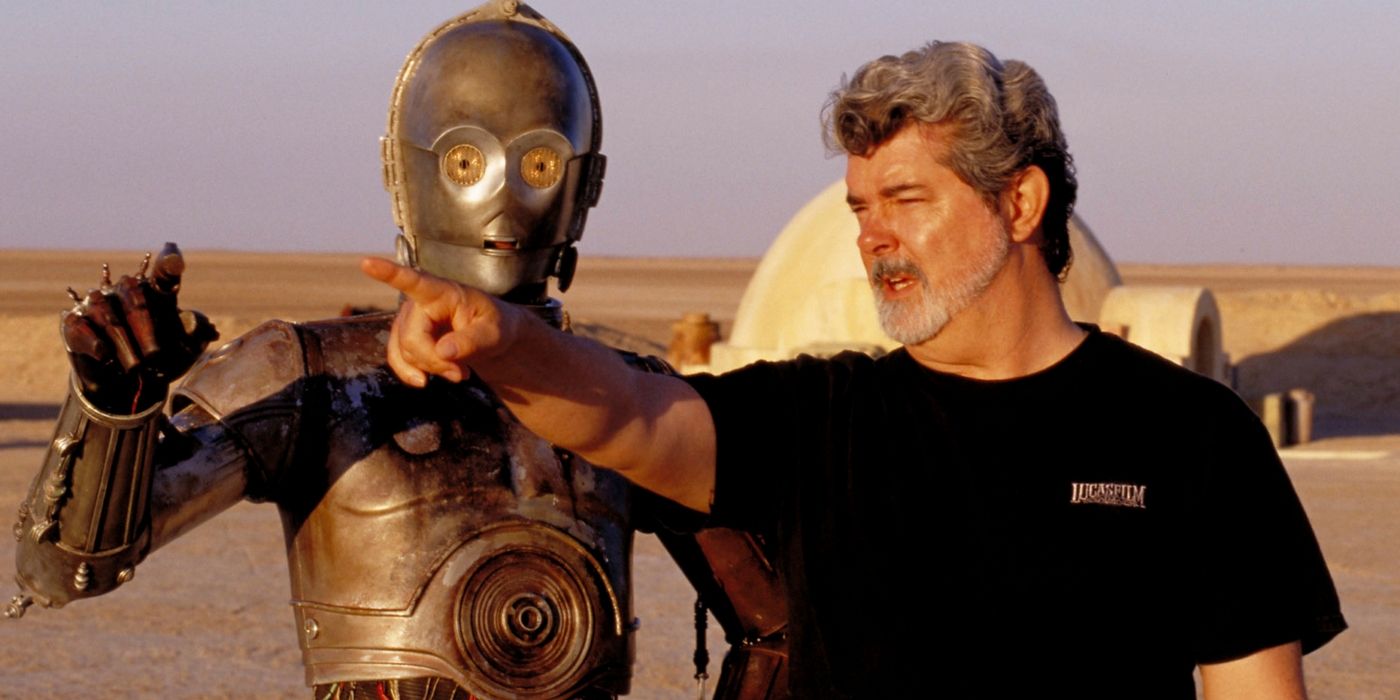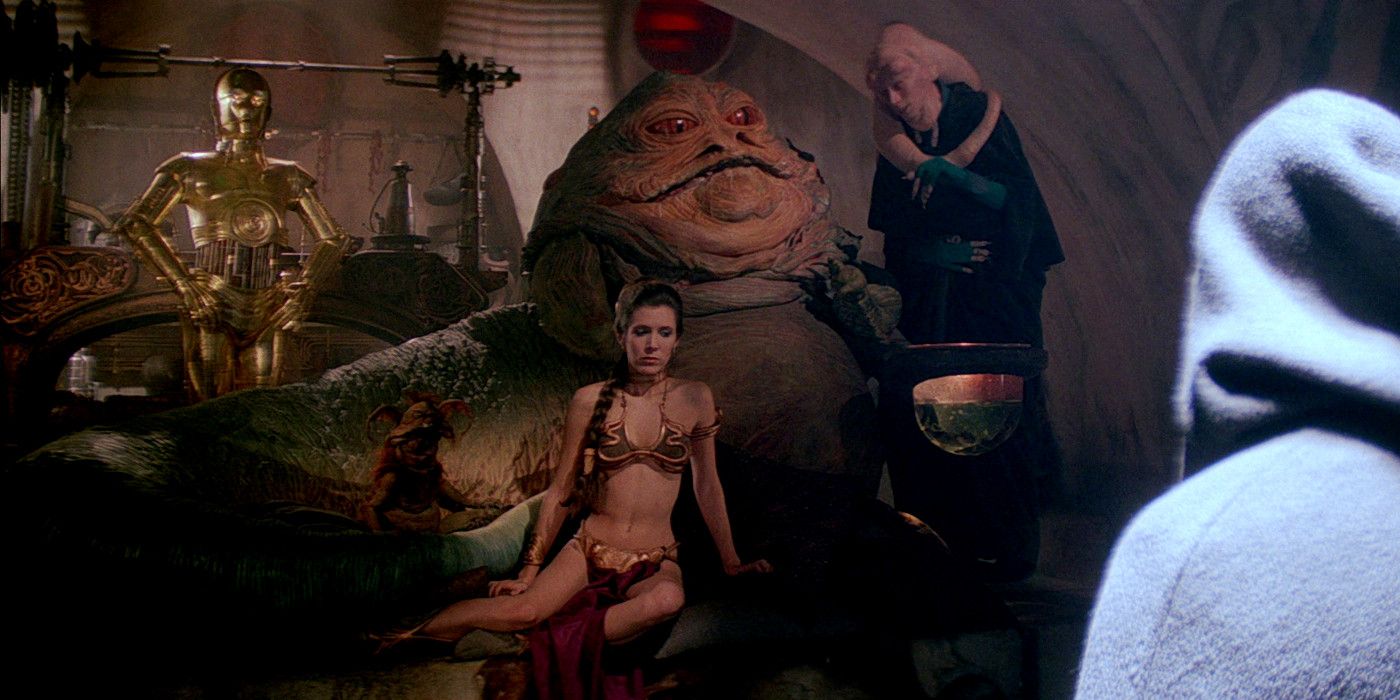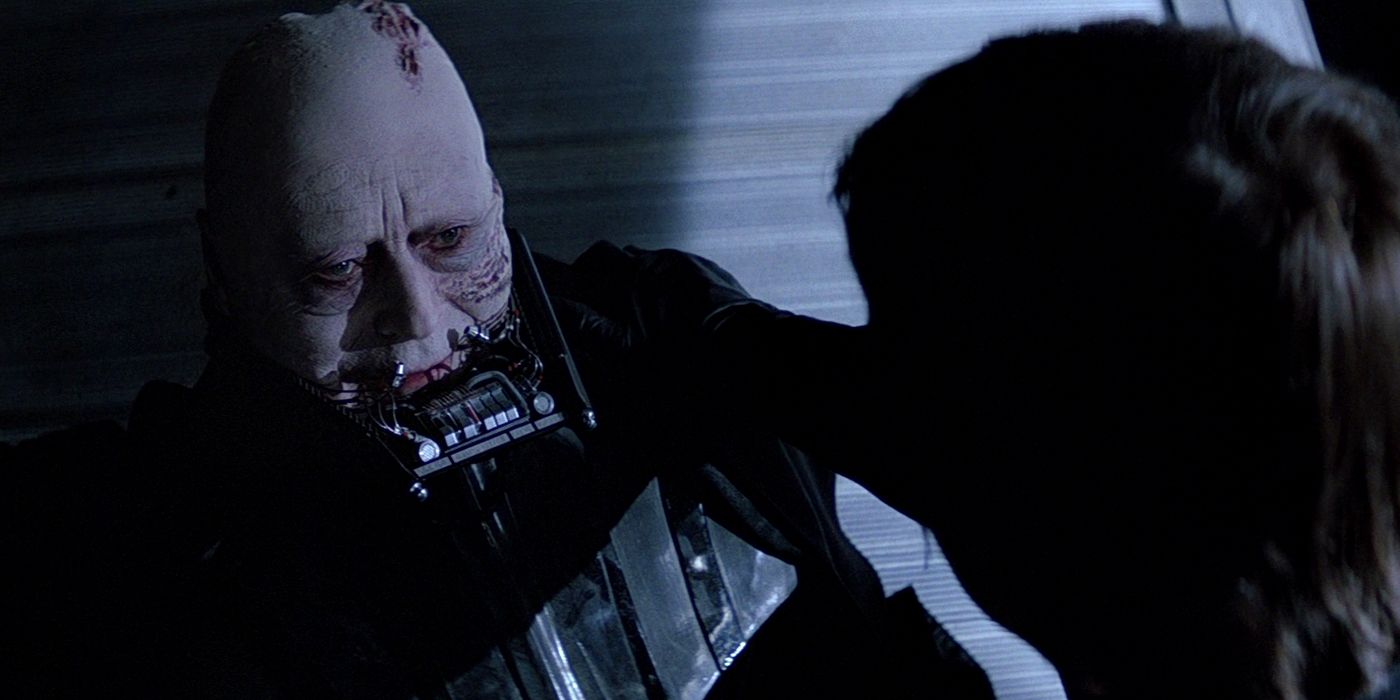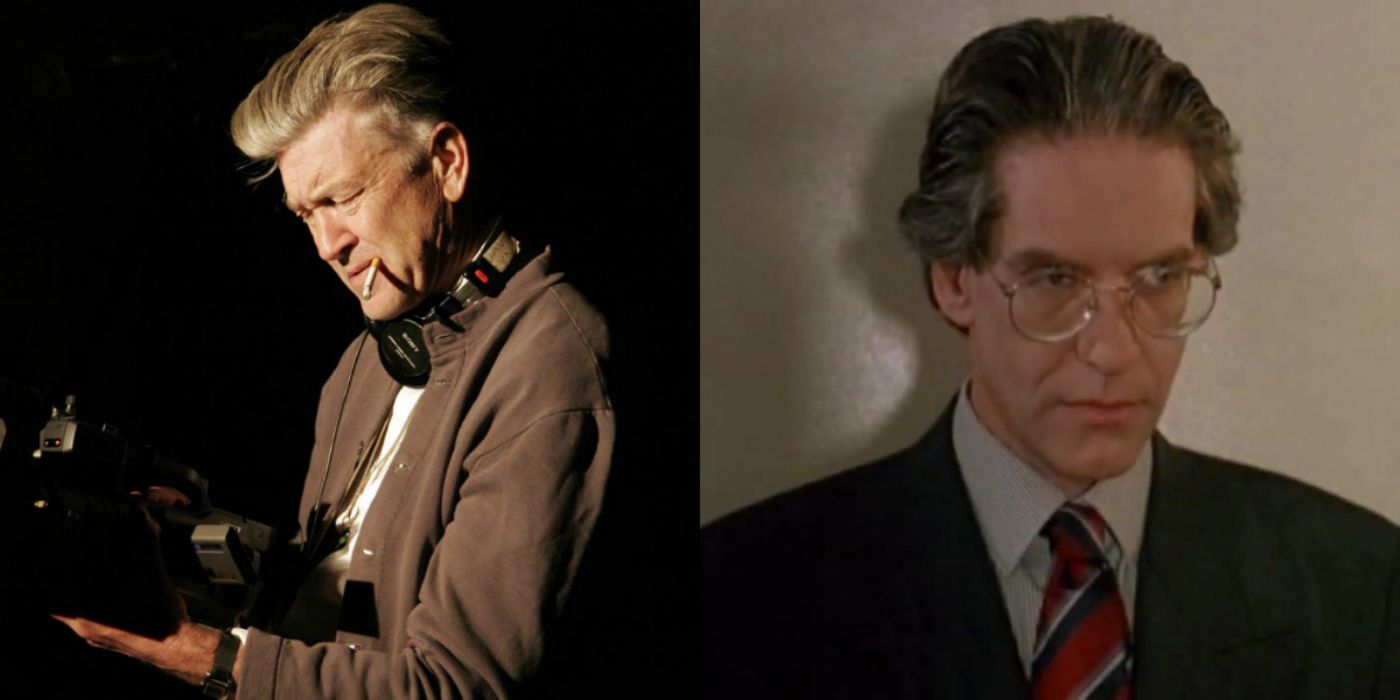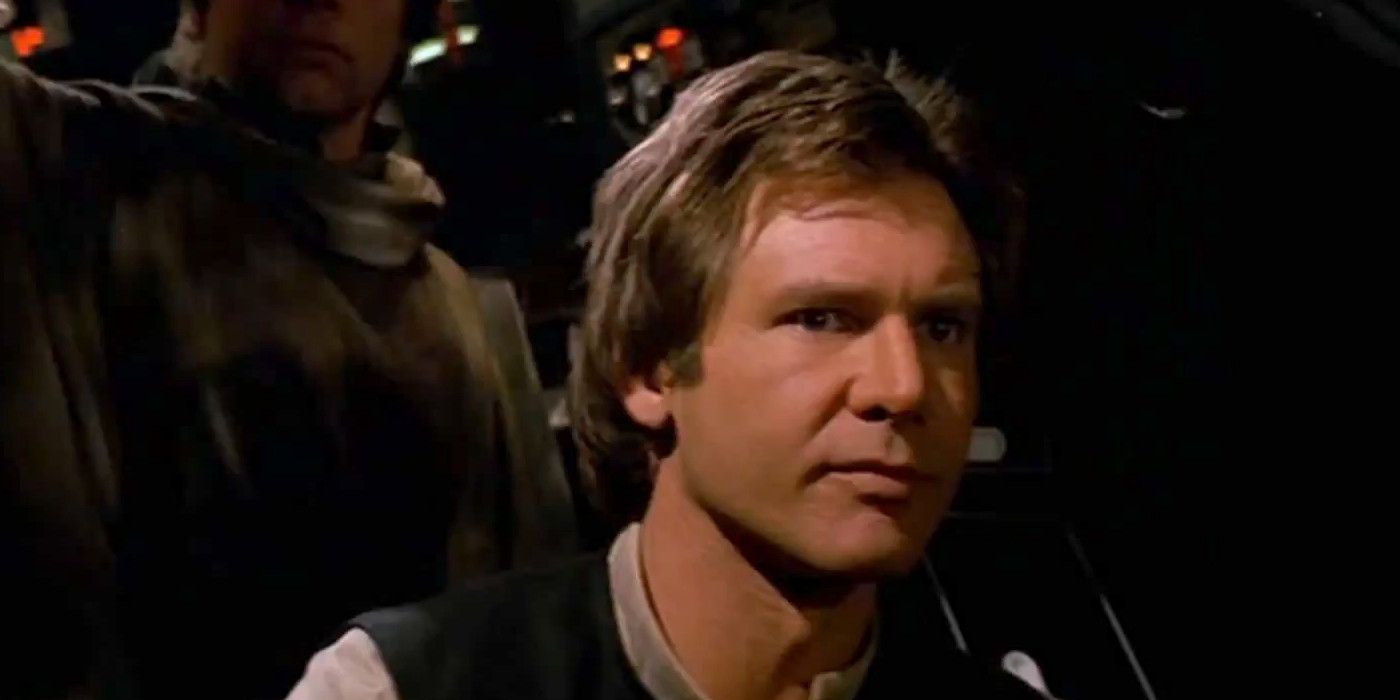Return of the Jedi remains divisive among Star Wars fans. Most fans of the series regard it as a fine, if slightly redundant, conclusion to the Original Trilogy, while detractors—largely older viewers, who saw the first two films in their original theatrical runs—see it as the point where the series went off the rails. The film opened in 1983 to record-breaking box office and positive reviews, though the film’s harshest critics attacked it for including too many aliens, redeeming Darth Vader (to the extent he can be redeemed) and introducing the Ewoks as a cash grab aimed at younger viewers. That said, since when can a galaxy of Hutts and Sith not have cute characters too!?
Regardless, the movie has become part of the cultural phenomenon of Star Wars; an imaginative, emotional and very fun romp in a galaxy long ago and far away. The making of the film could become a movie unto itself. Production on Jedi, much like the two preceding films, was wrought with bruised egos, story problems, production crises and deteriorating relationships. Find here a brief rundown of some of the juiciest bits, as Screen Rant uncovers 15 Secrets of Return of the Jedi!
15. The film would have introduced Luke’s Sister who wasn’t Leia
Let’s get one big misunderstanding out of the way first: Return of the Jedi, at least in its initial design, would not have ended the Star Wars saga. The debate goes on as to how many films George Lucas intended to make after the original movie. Lucas had considered sequels early on in the production of Star Wars, and even hired Alan Dean Foster to write one. Since production nearly killed him (really), Lucas intended to move on to smaller films after his kiddie homage, Star Wars.
History—and box office receipts—dictated otherwise. Lucas came up with a much larger story during the writing of Empire Strikes Back that would span decades. He then decided that Star Wars films should come in cycles of trilogies, and Return of the Jedi would have closed the door on the Original Trilogy, while alluding to both prequels and sequels. At this point in development, Jedi would have introduced Nelleth Skywalker, Luke’s twin sister. Like her brother, Nelleth would have grown up in a remote part of the galaxy, hidden away from the Emperor. Luke would confront and defeat Vader in Jedi, and his new quest would begin. The Sequel Trilogy would have followed Nelleth’s adventures and Jedi training as she and Luke sought to destroy the Emperor.
14. Boba Fett almost had a larger role
Boba Fett has long carried a certain mystique that the other characters in Star Wars lack. In the days of the Original Trilogy, Fett’s shady origins and secret motives made him a compelling villain, as did his kidnapping of Han Solo. With his debut in The Star Wars Holiday Special, Lucas & co. began to build up Fett as a pivotal character. He also became the first action figure released for Empire Strikes Back.
George Lucas developed Boba Fett as a counterpoint to Darth Vader. When he made Star Wars, Lucas had intended Darth Vader as a sort of mercenary character, hence his deference to Grand Moff Tarkin. Lucas envisioned the Sith as a warrior clan rivaling the Jedi before the “I am your father” plot point turned the series upside down. Empire introduced Boba Fett to fill the role Vader vacated—that of the Empire’s hired gun. Jedi would have included a larger appearance by Boba Fett, who would become a recurring villain after Vader’s death, and into the Sequel Trilogy. Lucas’ choice to end the series with Jedi nullified those plans, and thus Fett makes his departure via the Sarlacc Pit.
13. It was the first Star Wars movie to film large sections in the US
Return of the Jedi broke with a Star Wars tradition—one carried over into the present day, in fact. For the most part, the movies all filmed overseas. Both Star Wars and Empire filmed in England, and the Prequel Trilogy filmed in Europe and Australia. Jedi, however, filmed large chunks in the US.
For starters, the Tatooine sequences filmed in the deserts of Arizona, shooting under the false title Blue Harvest to keep costs down (people loved to price gouge Lucas) and to keep pesky reporters away. The title has since become something of a showbiz in joke. For the record, the fake title didn’t work, and nosy fans turned up to snap a picture or two of Jabba’s sail barge.
The Endor sequences filmed in Marin County, CA, in the historic redwood forests there. Lucas had relocated to northern CA after making his fortune on Star Wars, and intended to start his own Lucasfilm studio there. He built Skywalker Ranch as the first step towards that non-Hollywood studio, and filming the Endor sequences there helped popularize the area as a filming location.
12. Lucas intended it to end the saga once and for all
Just how many Star Wars movies did George Lucas intend to make? The answer depends on what point in time the question is posed. During production, Lucas intended Star Wars as a stand alone film. When it became the biggest movie in history, he considered making six, and later nine, and even later twelve films, each in a cycle of trilogies. As development geared up on Empire, Lucas revised his outline to nine films—the prequels about Anakin Skywalker, the first trilogy about Luke, and the third/sequel trilogy about Nelleth, Luke’s twin sister. The disastrous production of Empire, and the incredible strain it put on Lucas’ personal life convinced him to conclude the Star Wars saga with Return of the Jedi. The Emperor, once envisioned as the villain of the Sequel Trilogy, would meet his end in Jedi alongside Vader. The Han-Luke-Leia love triangle would also get final resolution with the merging of Nelleth Skywalker and Leia Organa into one character, and the destruction of Death Star II would symbolize the final defeat of the Empire.
11. Ian McDiarmid wasn’t the first choice for Palpatine
Star Wars, as a saga, made one of its greatest masterstrokes with the casting of unknown Shakespearian actor Ian McDiarmid in the role of Emperor Palpatine. McDiarmid’s iconic work in Return of the Jedi would foreshadow his scene stealing in the Prequel Trilogy, and help the actor secure a film career.
It almost didn’t happen though. Lucas & director Richard Marquand had cast another elderly actor in the part. Unfortunately, he died just before filming could commence, and McDiarmid stepped in as a last minute replacement. Only in his 30’s at the time Jedi rolled film, McDiarmid wore heavy prosthetic make-up to look like the age-ravaged Emperor.
McDiarmid didn’t expect the acclaim his performance would win, nor did he expect a call 19 years later from George Lucas inviting him back to play Palpatine in the Prequel Trilogy. Early drafts of Jedi featured Palpatine in a lightsaber duel with Luke & Vader; Lucas scrapped them in rewrites, though McDiarmid would finally get in on the saber action in the prequels.
10. Moff Jerjerod’s role was originally much larger
Just who is Moff Jerjerod anyway? Only the die-hardest of Star Wars fans could identify the character by name—the Imperial officer that welcomes Darth Vader to Death Star II in the opening sequences of the movie. Though his character barely registers in the final film, early scripts, and indeed, early cuts of Jedi featured the character in a much larger role.
Early drafts of Return of the Jedi featured Jerjerod as a bitter rival of Darth Vader for the Emperor’s good regards. With the Emperor detecting Vader’s inner conflict over Luke’s fate, Palpatine and Jerjerod would have combined forces to kill Vader and turn Luke to the Dark Side. Vader would have discovered this plan over the course of the film, and killed Jerjerod. The rough cut of Jedi also featured Jerjerod in a larger, more sympathetic role. In the final act of Jedi, Palpatine would order the Grand Moff to destroy Endor, should the Rebels succeed in deactivating the Death Star shields on the planet. Jerjerod would lodge protest to the Emperor, given the large Imperial force gathered on the surface. Of course, Han & Leia would succeed in doing so, and Jerjerod would begin the firing sequence…just as the Millennium Falcon would fly into the superstructure of the Death Star, and destroy it from the inside.
9. Luke’s new saber was meant to be blue
Audiences in 1983 raised eyebrows when Luke Skywalker ignited a new green lightsaber in Return of the Jedi. Prior to the film, Jedi all carried blue sabers, while the Sith wielded a red one. In fact, Luke’s saber did sport a blue blade, at least in early cuts of the film, and in a few trailer spots. This created a problem, however, in the sequence with Jabba’s sail barge. When Luke ignited the lightsaber, it blended in with the clear blue skies of Tatooine!
George Lucas had wanted to push the boundaries of visual effects, first on Empire, and again on Jedi. For that reason, more sequences take place on the surface of planets, as opposed to the space dogfights of the original film. Other effects technicians had accused Lucas and Industrial Light & Magic of using the blackness of space to hide the seams of his composited effects. With a blue sky instead of a black one, Lucas couldn’t be accused of copping out on his compositing. Midway through production, Lucas ordered Luke’s saber color changed from blue to green to add to the contrast with the sky. A deleted scene even shows Luke building the saber in a cave before hiding it in R2-D2.
8. Production was almost a disaster, requiring Lucas to step in (again)
Unwilling to repeat the stress of Star Wars, Lucas handed the story of Empire off to Leigh Brackett and Lawrence Kasdan, while Irvin Kershner assumed directorial duties. Gary Kurtz, producer of Star Wars returned to produce, giving Lucas less of a role in production. Filming, however, proved a disaster, and with Lucas staking his entire fortune on the movie (he self-funded it, along with Jedi and the Prequel Trilogy), he reluctantly returned to keep Empire on schedule.
Part of the reason Lucas intended Return of the Jedi to end the Star Wars saga came from the stress of producing the movies. Lucas’ personal life was in a shambles, and he wanted nothing more to do with the series. Jedi, however, again demanded Lucas’ attention, and he once again ended up on set every day, overseeing the special effects sequences and ghost directing portions of the film to keep it under budget and on time. He’d not intended to take such an active role, but with no managing producer a-la Gary Kurtz on the film, Lucas ended up having to take on most of the day-to-day production duties himself once again.
7. Warwick Davis made his debut as Wicket the Ewok, at age 11
Much as The Wizard of Oz demanded a record-breaking number of dwarves way back in 1939, so did Return of the Jedi again unite a squadron of little people to bring the Ewoks to life. Most prominently, the character Wicket would befriend Princess Leia, and help introduce the Star Wars heroes to the tribe on Endor. The Rebels and Ewoks would band together to stop the Empire.
Kenny Baker, who played R2-D2 throughout the Original Trilogy, would have taken on the role of Wicket as well. A sudden case of food poisoning forced him to withdraw, however, leaving the role open. An 11-year-old British boy named Warwick Davis had auditioned for Jedi after his grandmother heard radio ads calling for people of short stature. Davis ended up donning the Wicket costume, and gave his first performance ever in the movie, which he based on his pet dog. Davis would go on to become a respected actor and Lucasfilm staple, appearing in the Prequel Trilogy and other Lucasfilm productions like Willow.
6. Gary Kurtz spoke publicly against the movie
After the disaster of Empire, George Lucas and his longtime producing partner Gary Kurtz had parted company. Kurtz had infuriated Lucas while making Empire when the producer couldn’t keep the movie under budget or filming on schedule. With Lucas’ again staking his personal fortune on the success of a self-funded film, he opted not to invite Kurtz back to produce Jedi.
Kurtz never quite got over getting cut out of the most successful film series in history, and over the years, has accused George Lucas of compromising the story in Jedi in favor of financial gain. Specifically, Kurtz claims Han Solo would have died in Jedi, but Lucas kept him alive to boost toy sales. He also claims the movie would have had a darker ending. Production documentation, including early scripts, rebut this notion. Lucas also pushed merchandise sales knowing that the revenue could help fund and finish Skywalker Ranch, as well as future self-produced movies. Kurtz also likely refers to the story outline for Jedi penciled together during story conferences for Empire as the basis for his story critiques.
5. The movie finally killed George’s marriage
Marcia Lucas remains one of the great unsung heroes of the Star Wars Original Trilogy. George Lucas’ wife at the time, she won an Oscar for editing the first movie, and provided invaluable suggestions and influence during development of the stories. The success of the first film, however, plunged Marcia and George into unforeseen chaos. With the massive fortune earned from Star Wars, the couple could begin work on building Skywalker Ranch and establishing Lucasfilm as an independent studio.
As production ramped up on Empire and George decided to take a more passive role in production, he and Marcia wanted to start a family. Unfortunately, the couple had trouble conceiving children. Meanwhile, production on Empire dragged and the budget nearly doubled. In fact, Lucas had to divert bank loans for building Skywalker Ranch to help finish the movie! With Lucas stepping in to make sure Empire didn’t get more out of hand, his marriage came under strain. That stress increased when, after Empire, doctors told the couple they couldn’t have children.
Marcia and George, under personal and professional stress, began to drift apart. When George had to step in to finish Jedi yet again, it signaled the end of their marriage. The two adopted a daughter, Amanda, just prior to shooting, and divorced not long after the film’s release. Marcia, incidentally, took home the biggest divorce settlement in history. Today, she lives in anonymity as a recluse.
4. It took seven people to operate Jabba
George Lucas had always intended part of the fun of Star Wars as its inclusion of weird alien species and environments. Empire introduced Yoda, but lacked a Mos Eisley Cantina-style smorgasbord of alien characters. Jedi would correct that issue, introducing the Ewok race, and the scum and villainy of Jabba’s Palace.
Jabba the Hutt himself would become a beloved character, as the much-discussed gangster would make his first appearance as a giant slug. Artist Stuart Freeborn, the man who designed Yoda, also designed the Jabba puppet, which took a full eight people to operate. This included dwarf to operate Jabba’s tail, who sustained a painful injury. While filming Jabba’s death scene, Carrie Fisher climbed over the Jabba puppet, and one of her stiletto heels went right through the soft body and into the head of the tail operator! For subsequent takes, the crew installed a rough area for Fisher to step on, so as not to hurt anyone operating Jabba.
3. There were more scenes of Vader's inner conflict with the Empire
Return of the Jedi introduces the concept of Darth Vader’s inner conflict. Prior to this third installment in the series, Vader had appeared almost absolutely evil. The “I am your father” revelation in Empire changed the dynamic of the series, however. With the characters of Vader and Anakin Skywalker merged into a single figure, Vader would take on more personal dimension.
Jedi featured a series of deleted scenes portraying Vader’s increasing tension with the Empire, including the Emperor himself. Moff Jerjerod (see above) would have run afoul with Vader in one sequence, when he prevented Vader from entering the Emperor’s throne room. Vader would Force choke Jerjerod, and prepare to fight the Imperial Guards (the guards in all red). Another scene featured Vader trying to contact Luke through the Force, begging him to join forces against the Emperor. These scenes would foreshadow Vader’s ultimate choice to kill the Emperor and save Luke’s life. They would also allude to the guilt-ridden, ashamed figure Anakin would become in the Prequel Trilogy.
2. Several noted directors turned down the project
As already mentioned, George Lucas had little desire to direct a Star Wars film again after the original. He’d hired Irvin Kershener to direct Empire after studying with Kershner in film school. Kersh, as he’s nicknamed among friends, and his slow style had, in part, caused the overages on Empire as he fell way behind schedule. For that reason, Lucas didn’t ask him to return to direct Return of the Jedi.
Realizing he would take a larger producing role on Jedi, Lucas began looking for another director to helm the film. He first approached Steven Spielberg, who accepted the job, only to withdraw after he came into conflict with the Director’s Guild. Lucas then met with David Lynch, who’d just scored a critical hit with The Elephant Man. Lynch showed some interest, but declined after a meeting with Lucas. Lynch claims he realized that Lucas would retain almost total creative control on the movie, and thus rejected the job. Lucas also approached David Cronenberg, who had already directed the cult sci-fi movies Brood and Scanners. He too, wanted to focus on more personal projects, and thus declined. Lucas then hired Richard Marquand to direct the picture, though Lucas himself would direct portions of the film himself.
1. Han Solo almost died off screen
The fate of Han Solo had long remained in question ever since Lucas had opted to produce sequels to Star Wars. During contract negotiations on the original movie, Lucas had managed to sign Mark Hamill and Carrie Fisher to three picture contracts. Ford declined, however, preferring a movie-by-movie approach. He decided to return for Empire, but after Raiders of the Lost Ark made him an even bigger star, he struggled with returning to Han Solo yet again.
Lucas and his writers had forseen this possibility during the writing stage on Empire, and thus written in an “out” for the series. Darth Vader would freeze Han in carbonite and turn his body over to Boba Fett, while the story would also introduce the lovable rogue Lando Calrissian to fill Han’s function in the story, should Ford decline to return. In that event, Han would have died off screen prior to the events of Jedi. Ultimately though, Ford returned, preferring Han to die in a heroic feat. Lucas overruled him, however, intending Jedi to cap off the saga, and wanted a happy ending for the Star Wars heroes.
---
Did we leave out your favorite Jedi trivia? Tell us in the comments!
KEY RELEASE DATES
- Star Wars: Rogue One / Rogue One: A Star Wars Story release date: Dec 16, 2016
- Star Wars 8 / Star Wars: Episode VIII release date: Dec 15, 2017
- Untitled Han Solo Star Wars Anthology Film release date: May 25, 2018

